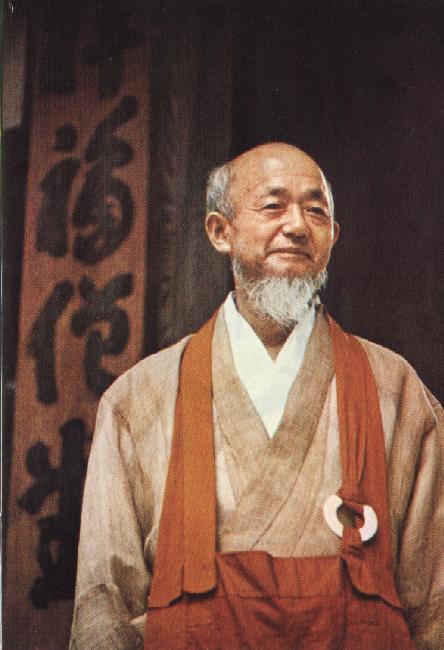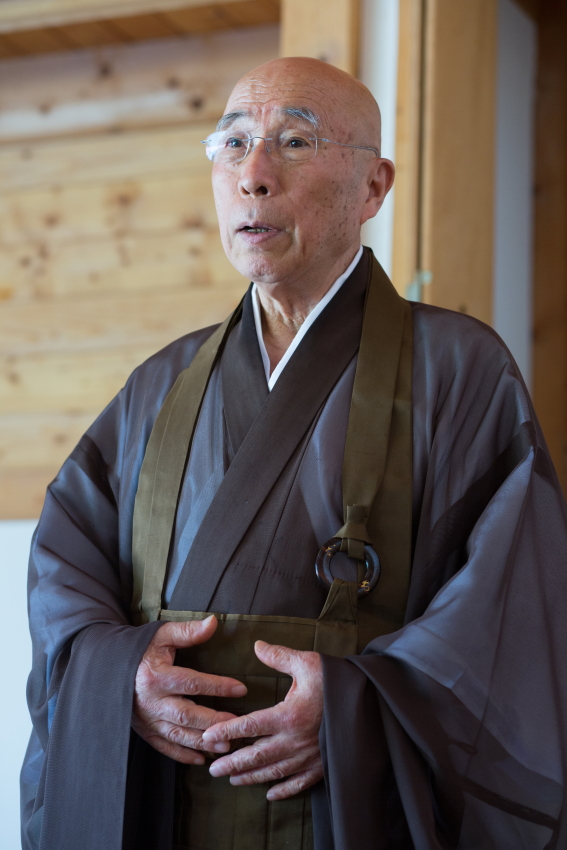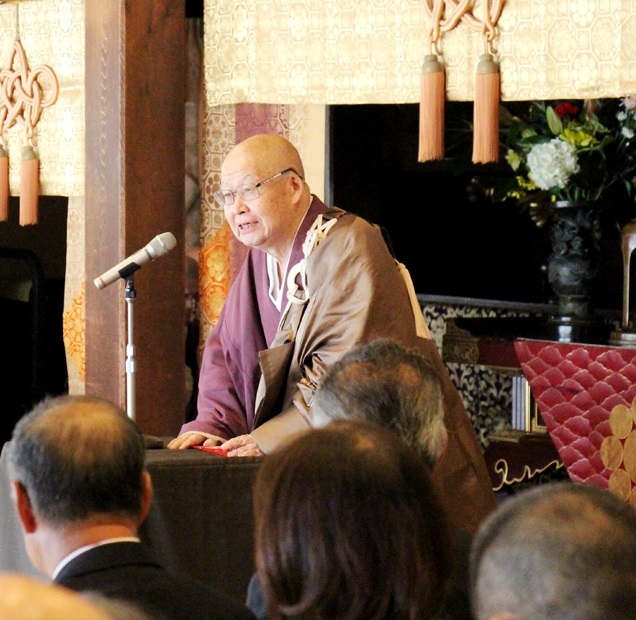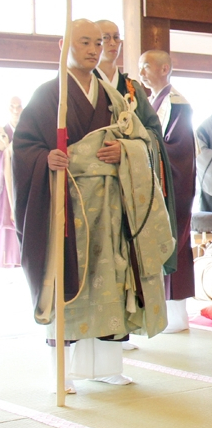Yamada Mumon Rōshi

Mumon Rōshi was born in 1900 in a little mountain village in Japan. A sensitive child with a precocious literary talent, he planned on going into law to meet to his parents’ hopes and also to his own sense of justice. However, deeply affected by questions about the meaning of life, he gave up his studies. It was at this time that Kawaguchi Ekai Rōshi, the first Zen master to enter Tibet, gave a conference on the theme of bodhisattvas, which made a strong impression on Mumon Rōshi. He decided to devote himself to practise under Ekai Rōshi, but his fragile constitution made it difficult to endure the frugality of the food and the extreme rigour of the discipline. He caught tuberculosis. Declared incurable by doctors at the time, he lived as a recluse for two years, awaiting death. One morning, he felt sufficiently well to open the window of his bedroom to let in some fresh air. Suddenly, he became aware of the presence of a great energy enveloping everything, which never left him. He recounted this overwhelming experience in a poem:
Oh Great All Embracing Mind!
A clear realisation,
Brought to me by this morning’s cool wafting breeze.
This experience marked the start of his recovery. A short time after, he met a reverend who prescribed the use of medlar leaves, and he was cured within three months. Having regained good health, he once again devoted himself to Zen practice, first at the Myōshin-ji monastery, then at Tenryū-ji under the direction of Seisetsu Genjō Rōshi. He did this up to the age of 50. He then directed the Shōfuku-ji monastery at Kōbe and finally took on the role of Head Abbot at Myōshin-ji, the head temple of three thousand other temples and monasteries.
Spending all his energy on teaching and helping others, he devoted his life to the enlightenment of all beings with the intensity of a saint and became known as the Hakuin of modern times. During the last years of his life, illness greatly diminished him, but he continued teaching through his calligraphy. He passed away at the age of 88, after writing his Poem before death in calligraphy:
For the liberation of all beings
There is finally nothing to be said
No words, no form
Only abandoning everything
throughout heaven and earth.
An erudite Confucianist, a great orator, an illustrious calligrapher, and author of numerous commentaries of traditional texts as well as modern works on Zen, Mumon Rōshi is one of the great Rinzai masters of his generation to have left his mark on Japan from the post-war period through to the end of the 20th century.
Kōno Taitsū Rōshi

Taitsū Rōshi was Kanchō (i.e. Head Abbot) at Myōshin-ji monastery from 2010 to 2014. He was also President of the Union of Japanese Buddhists from 2010 to 2012.
He was born in 1930 in the prefecture of Oita, on the island of Kyūshū. He entered Shōfuku-ji in 1953, when Mumon Rōshi became head of the monastery. Taitsū Rōshi was Mumon’s first disciple to receive the certification of rōshi. He took over the direction of Shōfuku-ji in 1977. In 1994 he became director of the Buddhist university of Hanazono. In 2004, he left Shōfuku-ji and became Head Abbot at the Ryōmon-ji temple, near Himeji, founded by the Zen master of the 17th century, Bankei Ryōtaku. Having visited the Falaise Verte Zen Centre to direct sesshins several times, he came to France one last time in 2010, to consecrate the zendō of the Falaise Verte Zen Centre.
Kimura Taihō Rōshi

Taihō Rōshi, born in 1945 in Tōkyō, graduated from the university of Waseda. After 10 years of professional activity, he entered the Shōfuku-ji monastery and was ordained as a monk by Mumon Rōshi. After nearly 25 years of monastic life, he became the dharma successor of Taitsū Rōshi and took on the direction of Shōfuku-ji in 2004. He retired in 2016 and he too settled in Ryōmon-ji.
Iwamura Sōkō Rōshi

Sōkō Rōshi was born in 1970 in the prefecture of Gifu. At university, he specialised in the history of Buddhism, then entered the Zuiryō-ji monastery, in the town of Gifu. He stayed there for 10 years, then took up a position as researcher into Buddhist studies. He returned to Zen monastic life in Shōfuku-ji, in 2012. He became Head Abbot of Shōfuku-ji in 2016.